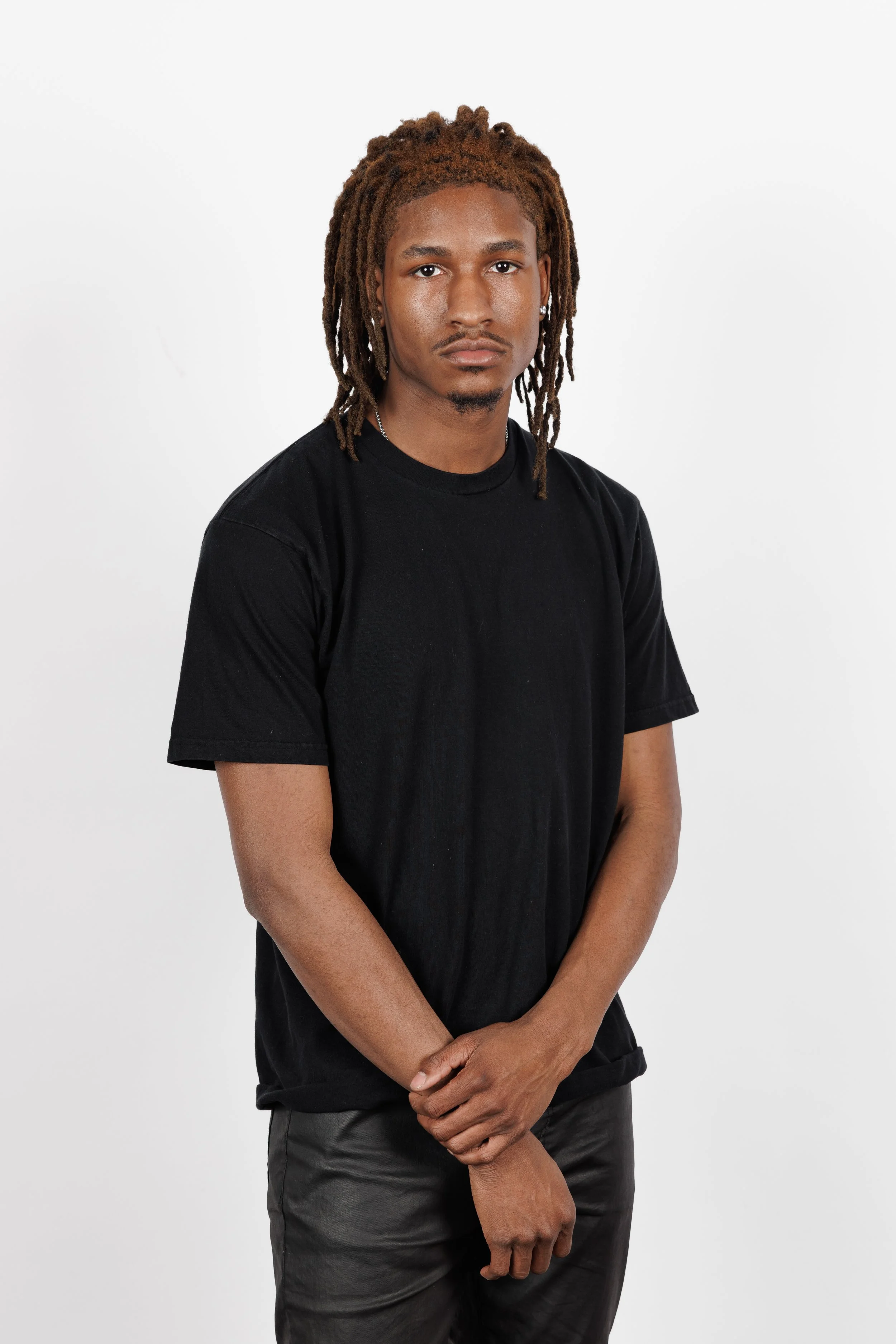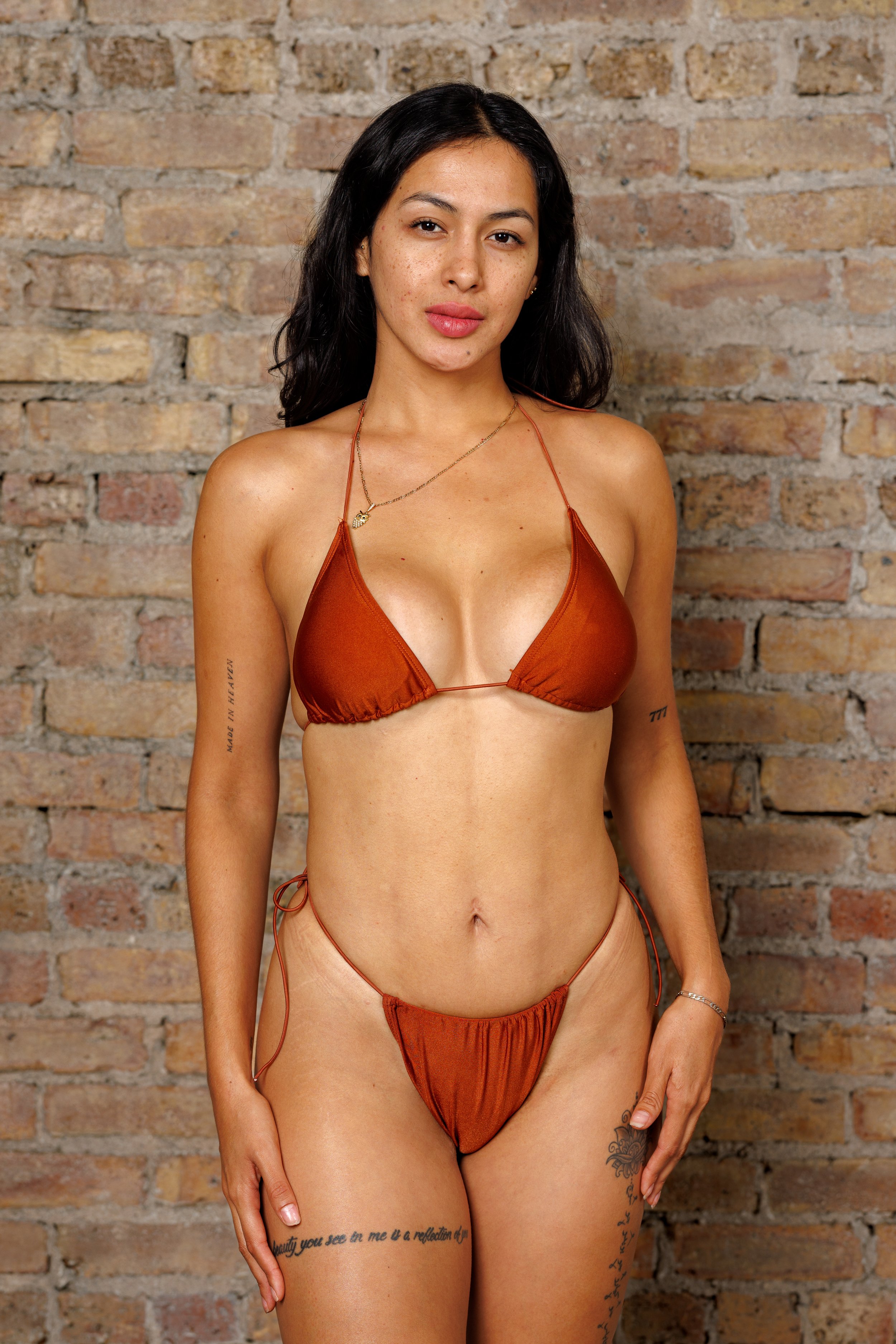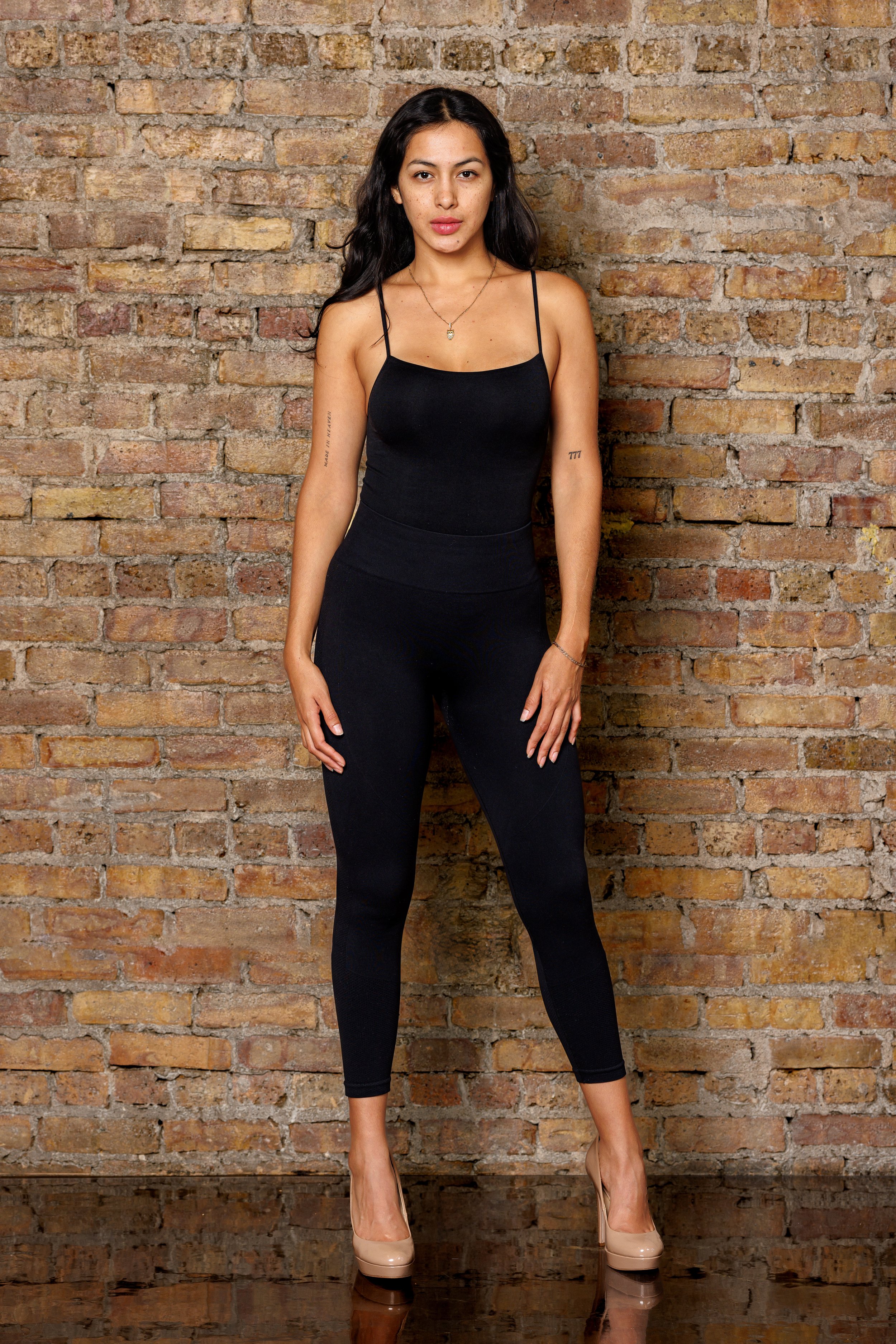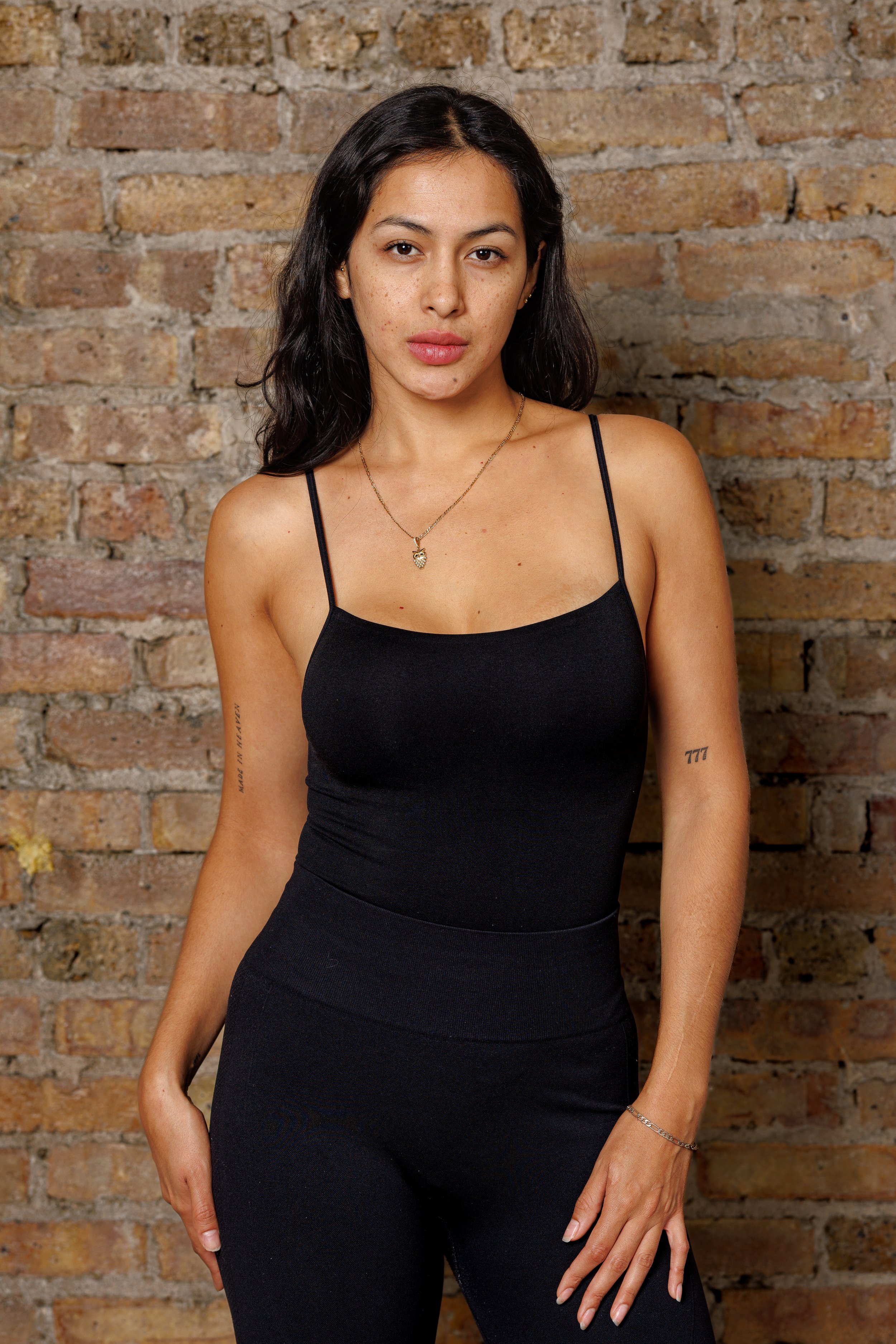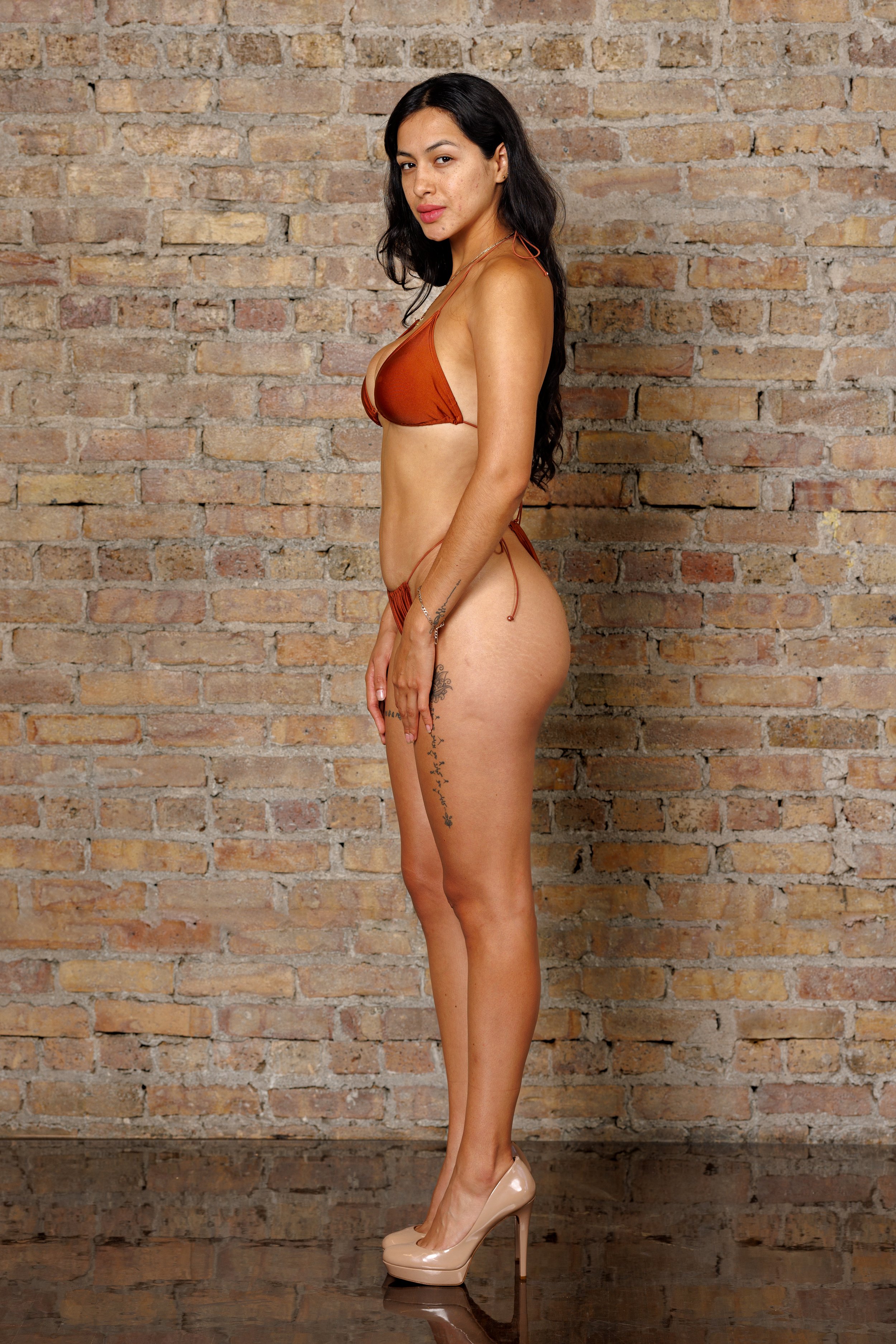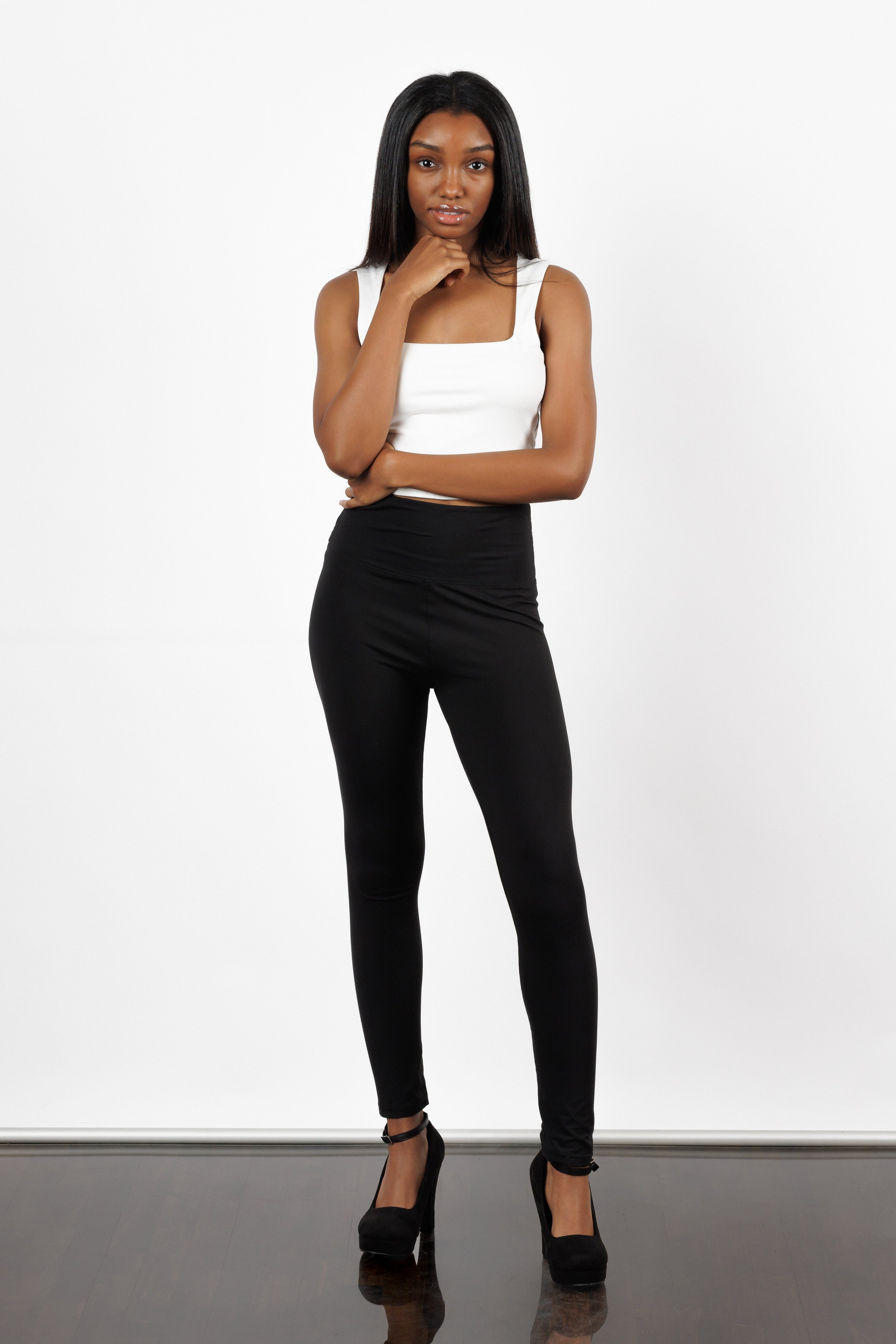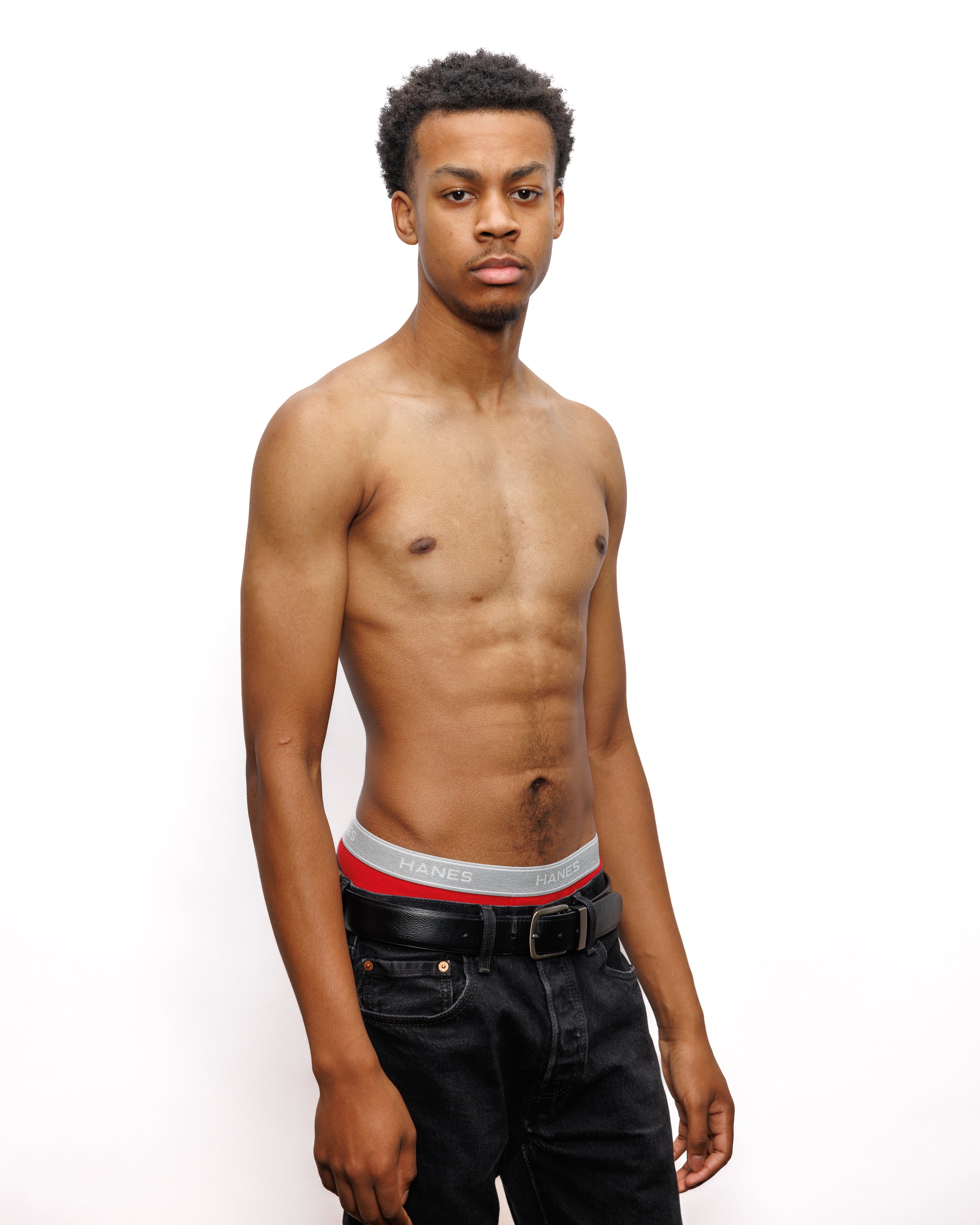Modeling Digitals
DISCLAIMER:
Some exclusions apply, so consultation is recommended before booking.
25% Deposit is required to book and schedule.
Pay in full via the website to avoid the processing fee of 3.5%
The remaining balance is due the day of your session.
WHAT’S INCLUDED:
- 30-45 Minute Mini Session
- 12 Professional Digitals
- Full White Backdrop, White Backdrop w/ Wooden Floor, or Brick-Wall
- 2 Outfits/Looks Max (Neutral Look + Swimwear Look)
- Limited Outtakes
- Live View of Photos During Session
- Images Selected On-Site (if time permits)
- Personalized Online Digital Gallery
- 3-5 Business Day Turnaround
Modeling Digitals by Derrick Diaz Photography LLC
Whether you're just starting in the industry or a seasoned pro, having a set of high-quality model digitals is essential to getting noticed by agencies and landing those modeling gigs you're dreaming of. Think of digitals as your first impression. They're what agencies use to evaluate your potential and decide whether or not to sign you. That's why having a set of modeling digitals is crucial to accurately representing your unique features and personality.
What Are Modeling Digitals?
Modeling digitals, also known as “poloroids”, are photographs showcasing a model's body, face, and features that give agencies a good sense of what the model looks like in real life. They are a collection of simple, unedited, and unretouched images that are lit in a particular way to present the model to agencies or clients as naturally as possible.
MODELING DIGITALS 101: WHAT TO KNOW IN ADVANCE
1: Minimal Makeup and Styling
Modeling digitals are meant to showcase natural beauty, so makeup should remain minimal and neutral. Avoid bold colors, heavy contouring, or experimental looks. Hair should be styled neatly, either down or pulled back to reveal facial structure. For male models, a clean-shaven or well-groomed appearance is preferred unless specific facial hair is requested.
2. Form-Fitting Wardrobe
Clothing that accentuates the model's silhouette is critical. Simple, fitted options such as a solid-colored tank top paired with skinny jeans. Avoid patterns, logos, or loud colors that detract attention from the model's natural features. The focus should be on demonstrating body proportions.
3. Defined Poses:
Models should exhibit neutral, confident poses that convey structure, symmetry, and ease. Standard shots include a full-body image, a waist-up shot, and a clear close-up of the face. Each angle ensures agencies can evaluate the model’s versatility. Poses should avoid excessive dramatization to maintain authenticity.
4. Authentic Expressions
A relaxed, natural expression is key. Models should avoid exaggerated smiles or overly serious looks. A subtle smile, soft eyes, and neutral lips often convey professionalism and poise. Confidence must shine through without appearing forced or stiff.
By ensuring these elements are present in modeling digitals, the photographs can meet professional standards and effectively showcase the model's potential to agencies or clients. Attention to these details highlights versatility, authenticity, and the model’s unique appeal.
5. Choosing the Right Outfit: Simplicity and Fit Are Key
When preparing for modeling digitals, selecting the appropriate outfit is crucial to creating a polished and professional presentation. The goal is to ensure the model’s natural features, proportions, and versatility take center stage, free from distractions. Therefore, simplicity and fit become the guiding principles when making wardrobe choices.
Neutral colors such as black, white, gray, or beige are ideal because they don’t draw attention away from the model. Busy patterns, bold prints, or overly bright colors should be avoided as they can overpower the image or clash with the overall composition. Solid tones paired with clean lines allow agencies and clients to focus on the model’s physical attributes rather than their clothing.
Clothing should fit the model’s body impeccably. Baggy or oversized garments create an unflattering silhouette, while overly tight outfits can look unprofessional or uncomfortable. A tailored look, achieved through items like fitted jeans, plain tank tops, or simple T-shirts, provides a timeless and universally flattering aesthetic. Opting for classic wardrobe staples ensures the ensemble complements the model’s frame and creates clean, cohesive lines in images.
Footwear should be understated yet aligned with the model's styling. Heels or clean sneakers in neutral tones are often preferred. Accessories, such as jewelry or bold belts, are unnecessary and can draw focus away from the face and posture. Minimalism is essential to keeping the presentation uncomplicated and professional.
Models should also consider industry standards or agency preferences when deciding what to wear for digitals. Taking time to curate an outfit that emphasizes simplicity and proper fit ensures the first impression is both striking and effective.
What to Avoid When Selecting Clothing for Digitals
When preparing clothing for modeling digitals, it is essential to avoid certain choices that can diminish the impact of the images or distract from the model’s natural features and proportions. Selecting the wrong clothing can undermine the purpose of these snapshots, which is to highlight the model’s versatility, figure, and face without unnecessary distractions.
1. Avoid Loud Patterns and Prints
Clothing with bold patterns, busy prints, or logos should be avoided as they tend to draw focus away from the model. The goal is to keep the attention on the individual, not on their attire. Simple solid colors in neutral tones work best to maintain the clean and professional aesthetic expected for digitals.
2. Stay Away From Oversized or Ill-Fitting Clothes
Oversized garments or clothes that do not fit properly can obscure the model’s silhouette, which is a critical element in modeling digitals. Similarly, overly tight or restrictive clothing can distort the figure. Ensure the chosen pieces fit well and clearly define the natural body shape without feeling extreme or constrictive.
3. Say No to Bright and Fluorescent Colors
Bright, neon, or fluorescent hues can be overly distracting in photos and may also cause issues with lighting. Neutral, muted, or soft colors such as black, white, gray, or beige are preferable, ensuring a clean and polished appearance that makes the model stand out rather than the clothing.
4. Skip Accessories and Excess Layers
Statement jewelry, hats, belts, scarves, or other accessories should not be part of a model’s digitals. These extras detract from the simplicity and professionalism of the image. Likewise, avoid layering clothing that might add unnecessary volume or complexity to the overall look.
5. Do Not Opt for Textured or Shiny Fabrics
Fabrics with heavy textures, sequins, or excessive shine can reflect light awkwardly in photographs and create distractions. Smooth, matte fabrics are better suited to digitals as they maintain a clean and uniform appearance on camera.
6. Avoid Trendy or Seasonal Clothing
Trendy or overly seasonal outfits can date the photos and make them less versatile for agencies and casting directors. Opt for timeless wardrobe staples that will keep the focus on the model rather than temporary fashion trends.
By steering clear of these common clothing mistakes, digitals will present a professional, polished foundation for the model’s portfolio.
DISCLAIMER:
Some exclusions apply, so consultation is recommended before booking.
25% Deposit is required to book and schedule.
Pay in full via the website to avoid the processing fee of 3.5%
The remaining balance is due the day of your session.
WHAT’S INCLUDED:
- 30-45 Minute Mini Session
- 12 Professional Digitals
- Full White Backdrop, White Backdrop w/ Wooden Floor, or Brick-Wall
- 2 Outfits/Looks Max (Neutral Look + Swimwear Look)
- Limited Outtakes
- Live View of Photos During Session
- Images Selected On-Site (if time permits)
- Personalized Online Digital Gallery
- 3-5 Business Day Turnaround
Modeling Digitals by Derrick Diaz Photography LLC
Whether you're just starting in the industry or a seasoned pro, having a set of high-quality model digitals is essential to getting noticed by agencies and landing those modeling gigs you're dreaming of. Think of digitals as your first impression. They're what agencies use to evaluate your potential and decide whether or not to sign you. That's why having a set of modeling digitals is crucial to accurately representing your unique features and personality.
What Are Modeling Digitals?
Modeling digitals, also known as “poloroids”, are photographs showcasing a model's body, face, and features that give agencies a good sense of what the model looks like in real life. They are a collection of simple, unedited, and unretouched images that are lit in a particular way to present the model to agencies or clients as naturally as possible.
MODELING DIGITALS 101: WHAT TO KNOW IN ADVANCE
1: Minimal Makeup and Styling
Modeling digitals are meant to showcase natural beauty, so makeup should remain minimal and neutral. Avoid bold colors, heavy contouring, or experimental looks. Hair should be styled neatly, either down or pulled back to reveal facial structure. For male models, a clean-shaven or well-groomed appearance is preferred unless specific facial hair is requested.
2. Form-Fitting Wardrobe
Clothing that accentuates the model's silhouette is critical. Simple, fitted options such as a solid-colored tank top paired with skinny jeans. Avoid patterns, logos, or loud colors that detract attention from the model's natural features. The focus should be on demonstrating body proportions.
3. Defined Poses:
Models should exhibit neutral, confident poses that convey structure, symmetry, and ease. Standard shots include a full-body image, a waist-up shot, and a clear close-up of the face. Each angle ensures agencies can evaluate the model’s versatility. Poses should avoid excessive dramatization to maintain authenticity.
4. Authentic Expressions
A relaxed, natural expression is key. Models should avoid exaggerated smiles or overly serious looks. A subtle smile, soft eyes, and neutral lips often convey professionalism and poise. Confidence must shine through without appearing forced or stiff.
By ensuring these elements are present in modeling digitals, the photographs can meet professional standards and effectively showcase the model's potential to agencies or clients. Attention to these details highlights versatility, authenticity, and the model’s unique appeal.
5. Choosing the Right Outfit: Simplicity and Fit Are Key
When preparing for modeling digitals, selecting the appropriate outfit is crucial to creating a polished and professional presentation. The goal is to ensure the model’s natural features, proportions, and versatility take center stage, free from distractions. Therefore, simplicity and fit become the guiding principles when making wardrobe choices.
Neutral colors such as black, white, gray, or beige are ideal because they don’t draw attention away from the model. Busy patterns, bold prints, or overly bright colors should be avoided as they can overpower the image or clash with the overall composition. Solid tones paired with clean lines allow agencies and clients to focus on the model’s physical attributes rather than their clothing.
Clothing should fit the model’s body impeccably. Baggy or oversized garments create an unflattering silhouette, while overly tight outfits can look unprofessional or uncomfortable. A tailored look, achieved through items like fitted jeans, plain tank tops, or simple T-shirts, provides a timeless and universally flattering aesthetic. Opting for classic wardrobe staples ensures the ensemble complements the model’s frame and creates clean, cohesive lines in images.
Footwear should be understated yet aligned with the model's styling. Heels or clean sneakers in neutral tones are often preferred. Accessories, such as jewelry or bold belts, are unnecessary and can draw focus away from the face and posture. Minimalism is essential to keeping the presentation uncomplicated and professional.
Models should also consider industry standards or agency preferences when deciding what to wear for digitals. Taking time to curate an outfit that emphasizes simplicity and proper fit ensures the first impression is both striking and effective.
What to Avoid When Selecting Clothing for Digitals
When preparing clothing for modeling digitals, it is essential to avoid certain choices that can diminish the impact of the images or distract from the model’s natural features and proportions. Selecting the wrong clothing can undermine the purpose of these snapshots, which is to highlight the model’s versatility, figure, and face without unnecessary distractions.
1. Avoid Loud Patterns and Prints
Clothing with bold patterns, busy prints, or logos should be avoided as they tend to draw focus away from the model. The goal is to keep the attention on the individual, not on their attire. Simple solid colors in neutral tones work best to maintain the clean and professional aesthetic expected for digitals.
2. Stay Away From Oversized or Ill-Fitting Clothes
Oversized garments or clothes that do not fit properly can obscure the model’s silhouette, which is a critical element in modeling digitals. Similarly, overly tight or restrictive clothing can distort the figure. Ensure the chosen pieces fit well and clearly define the natural body shape without feeling extreme or constrictive.
3. Say No to Bright and Fluorescent Colors
Bright, neon, or fluorescent hues can be overly distracting in photos and may also cause issues with lighting. Neutral, muted, or soft colors such as black, white, gray, or beige are preferable, ensuring a clean and polished appearance that makes the model stand out rather than the clothing.
4. Skip Accessories and Excess Layers
Statement jewelry, hats, belts, scarves, or other accessories should not be part of a model’s digitals. These extras detract from the simplicity and professionalism of the image. Likewise, avoid layering clothing that might add unnecessary volume or complexity to the overall look.
5. Do Not Opt for Textured or Shiny Fabrics
Fabrics with heavy textures, sequins, or excessive shine can reflect light awkwardly in photographs and create distractions. Smooth, matte fabrics are better suited to digitals as they maintain a clean and uniform appearance on camera.
6. Avoid Trendy or Seasonal Clothing
Trendy or overly seasonal outfits can date the photos and make them less versatile for agencies and casting directors. Opt for timeless wardrobe staples that will keep the focus on the model rather than temporary fashion trends.
By steering clear of these common clothing mistakes, digitals will present a professional, polished foundation for the model’s portfolio.

DISCLAIMER:
Some exclusions apply, so consultation is recommended before booking.
25% Deposit is required to book and schedule.
Pay in full via the website to avoid the processing fee of 3.5%
The remaining balance is due the day of your session.
WHAT’S INCLUDED:
- 30-45 Minute Mini Session
- 12 Professional Digitals
- Full White Backdrop, White Backdrop w/ Wooden Floor, or Brick-Wall
- 2 Outfits/Looks Max (Neutral Look + Swimwear Look)
- Limited Outtakes
- Live View of Photos During Session
- Images Selected On-Site (if time permits)
- Personalized Online Digital Gallery
- 3-5 Business Day Turnaround
Modeling Digitals by Derrick Diaz Photography LLC
Whether you're just starting in the industry or a seasoned pro, having a set of high-quality model digitals is essential to getting noticed by agencies and landing those modeling gigs you're dreaming of. Think of digitals as your first impression. They're what agencies use to evaluate your potential and decide whether or not to sign you. That's why having a set of modeling digitals is crucial to accurately representing your unique features and personality.
What Are Modeling Digitals?
Modeling digitals, also known as “poloroids”, are photographs showcasing a model's body, face, and features that give agencies a good sense of what the model looks like in real life. They are a collection of simple, unedited, and unretouched images that are lit in a particular way to present the model to agencies or clients as naturally as possible.
MODELING DIGITALS 101: WHAT TO KNOW IN ADVANCE
1: Minimal Makeup and Styling
Modeling digitals are meant to showcase natural beauty, so makeup should remain minimal and neutral. Avoid bold colors, heavy contouring, or experimental looks. Hair should be styled neatly, either down or pulled back to reveal facial structure. For male models, a clean-shaven or well-groomed appearance is preferred unless specific facial hair is requested.
2. Form-Fitting Wardrobe
Clothing that accentuates the model's silhouette is critical. Simple, fitted options such as a solid-colored tank top paired with skinny jeans. Avoid patterns, logos, or loud colors that detract attention from the model's natural features. The focus should be on demonstrating body proportions.
3. Defined Poses:
Models should exhibit neutral, confident poses that convey structure, symmetry, and ease. Standard shots include a full-body image, a waist-up shot, and a clear close-up of the face. Each angle ensures agencies can evaluate the model’s versatility. Poses should avoid excessive dramatization to maintain authenticity.
4. Authentic Expressions
A relaxed, natural expression is key. Models should avoid exaggerated smiles or overly serious looks. A subtle smile, soft eyes, and neutral lips often convey professionalism and poise. Confidence must shine through without appearing forced or stiff.
By ensuring these elements are present in modeling digitals, the photographs can meet professional standards and effectively showcase the model's potential to agencies or clients. Attention to these details highlights versatility, authenticity, and the model’s unique appeal.
5. Choosing the Right Outfit: Simplicity and Fit Are Key
When preparing for modeling digitals, selecting the appropriate outfit is crucial to creating a polished and professional presentation. The goal is to ensure the model’s natural features, proportions, and versatility take center stage, free from distractions. Therefore, simplicity and fit become the guiding principles when making wardrobe choices.
Neutral colors such as black, white, gray, or beige are ideal because they don’t draw attention away from the model. Busy patterns, bold prints, or overly bright colors should be avoided as they can overpower the image or clash with the overall composition. Solid tones paired with clean lines allow agencies and clients to focus on the model’s physical attributes rather than their clothing.
Clothing should fit the model’s body impeccably. Baggy or oversized garments create an unflattering silhouette, while overly tight outfits can look unprofessional or uncomfortable. A tailored look, achieved through items like fitted jeans, plain tank tops, or simple T-shirts, provides a timeless and universally flattering aesthetic. Opting for classic wardrobe staples ensures the ensemble complements the model’s frame and creates clean, cohesive lines in images.
Footwear should be understated yet aligned with the model's styling. Heels or clean sneakers in neutral tones are often preferred. Accessories, such as jewelry or bold belts, are unnecessary and can draw focus away from the face and posture. Minimalism is essential to keeping the presentation uncomplicated and professional.
Models should also consider industry standards or agency preferences when deciding what to wear for digitals. Taking time to curate an outfit that emphasizes simplicity and proper fit ensures the first impression is both striking and effective.
What to Avoid When Selecting Clothing for Digitals
When preparing clothing for modeling digitals, it is essential to avoid certain choices that can diminish the impact of the images or distract from the model’s natural features and proportions. Selecting the wrong clothing can undermine the purpose of these snapshots, which is to highlight the model’s versatility, figure, and face without unnecessary distractions.
1. Avoid Loud Patterns and Prints
Clothing with bold patterns, busy prints, or logos should be avoided as they tend to draw focus away from the model. The goal is to keep the attention on the individual, not on their attire. Simple solid colors in neutral tones work best to maintain the clean and professional aesthetic expected for digitals.
2. Stay Away From Oversized or Ill-Fitting Clothes
Oversized garments or clothes that do not fit properly can obscure the model’s silhouette, which is a critical element in modeling digitals. Similarly, overly tight or restrictive clothing can distort the figure. Ensure the chosen pieces fit well and clearly define the natural body shape without feeling extreme or constrictive.
3. Say No to Bright and Fluorescent Colors
Bright, neon, or fluorescent hues can be overly distracting in photos and may also cause issues with lighting. Neutral, muted, or soft colors such as black, white, gray, or beige are preferable, ensuring a clean and polished appearance that makes the model stand out rather than the clothing.
4. Skip Accessories and Excess Layers
Statement jewelry, hats, belts, scarves, or other accessories should not be part of a model’s digitals. These extras detract from the simplicity and professionalism of the image. Likewise, avoid layering clothing that might add unnecessary volume or complexity to the overall look.
5. Do Not Opt for Textured or Shiny Fabrics
Fabrics with heavy textures, sequins, or excessive shine can reflect light awkwardly in photographs and create distractions. Smooth, matte fabrics are better suited to digitals as they maintain a clean and uniform appearance on camera.
6. Avoid Trendy or Seasonal Clothing
Trendy or overly seasonal outfits can date the photos and make them less versatile for agencies and casting directors. Opt for timeless wardrobe staples that will keep the focus on the model rather than temporary fashion trends.
By steering clear of these common clothing mistakes, digitals will present a professional, polished foundation for the model’s portfolio.






